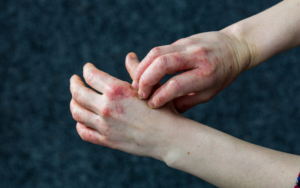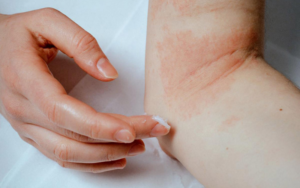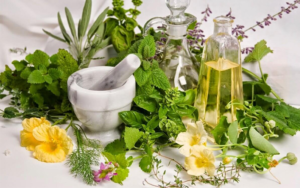It can be seen that the demand for beauty care for women is increasing day by day. Not only focusing on costumes and hairstyles, but also focusing on taking care of their nails, especially nails. However, to get a gorgeous nail set, the hands must be exposed to many chemicals. And that cannot avoid the possibility of skin reactions, the most common being allergic contact dermatitis.
Therefore, in today’s article, let’s learn about allergic contact dermatitis with Hylar? As well as the main cause of dermatitis for women when doing nails!
What is allergic contact dermatitis?
Allergic contact dermatitis is a common skin disease. It is an allergic reaction when the skin comes into contact with an allergen or comes into direct contact with an allergen.
Usually contact dermatitis will not pose a health hazard. However, it will cause itching and discomfort for the patient. If this condition persists, it will greatly affect the patient’s mental health and life and work.

What is the main cause of allergic contact dermatitis when doing nails?
In nail polish and nail care products often contain a lot of chemicals such as formaldehyde and toluene, acetone dibutyl, … Specifically, these chemicals are in gel polish and sulfur water used to cover nails. That is also the main cause directly causing contact dermatitis when doing nails.
Common symptoms of allergic contact dermatitis
Some recognizable symptoms of contact dermatitis include:
- Excessively dry skin leads to cracking, flaking, and scabs.
- Skin rashes, itching on the fingertips.
- The skin is red and even oozing.
- Skin is constantly peeling.
- Sores and nail damage.
- Blistering and burning of the skin surface.
Symptoms may appear depending on when the condition is just starting or when it is already advanced. Even so, when detecting the skin with the above symptoms, it must be treated. Avoid letting it spread to many other skin areas around. Or worse, can lead to infection is hyperpigmentation of the skin.

Some effective ways to treat allergic contact dermatitis
The combination of drug treatment and some home care measures. It will help to completely overcome allergic contact dermatitis. As well as preventing the formation of infectious complications or skin hyperpigmentation.
How to treat contact dermatitis at home?
Usually, if the disease is not too serious, the doctor will ask the patient to take care of themselves at home. With some of the following popular ways:
Apply a cool compress: Applying a cool cloth to the inflamed skin can help with inflammation and itching. In addition, combine soaking the cloth in salt or aluminium acetate solution before applying to the skin. This can help relieve the pain quickly.
Skin Cleansing: Wash your skin immediately when it comes in contact with an irritant.
Apply moisturiser: Use a gentle, fragrance-free moisturiser. To be able to soothe the skin and prevent atopic dermatitis. In addition, applying moisturiser also helps restore the skin’s protective barrier. As a result, the skin is healthier as well as less affected by irritants.
Coconut oil: this is a folk trick to help reduce symptoms of contact dermatitis effectively. Coconut oil of natural origin has the effect of limiting the growth of harmful bacteria. And at the same time can help moisturise the skin. However, sometimes coconut oil can also cause allergic reactions. Therefore, patients need to be careful when using it!
Use vitamin E: the application of vitamin E on the damaged skin helps to reduce itching and effectively fight inflammation.

How to cure dermatitis with medicine
- Here are some medications that are prescribed by doctors when symptoms are severe. Including topical drugs and drugs prescribed by a doctor:Steroid creams and ointments: soften the skin and soothe the symptoms of atopic dermatitis on the hands. This drug should be used when the disease is in the acute stage. And should not be used when the disease symptoms have shown signs of reduction.
Corticosteroid ointments: Commonly used corticosteroid ointments such as Celestone, Medrol or Kenalog. With contact inflammation, patients can use low doses to reduce inflammation and treat. However, patients can only use this drug for a short period of time. And should gradually reduce the dose before stopping completely to avoid causing side effects.
- Antihistamines: These are drugs that help inhibit the formation of histamine – an active ingredient that causes skin irritation. The drug has the ability to relieve itching extremely effectively and quickly.
- Oral steroids: this is the type of medicine that is recommended by doctors for people with severe symptoms. Because steroids can cause dangerous side effects, they should only be used for short periods of time. Or only when prescribed by a doctor.
- Drugs that suppress the systemic immune system: this is a drug that will be indicated for severe cases of dermatitis.
Note: During the use of the drug, patients should monitor for side effects. In order to provide appropriate treatment as soon as possible.
Epilogue
Through the above article, Hylar hopes to help you better understand allergic contact dermatitis. It can be seen that allergic contact dermatitis after nailing is not life-threatening. But the patient should not be subjective to this disease. If the symptoms persist and become severe. Then it’s best to go to the hospital for treatment as soon as possible!







